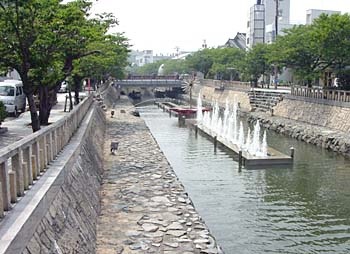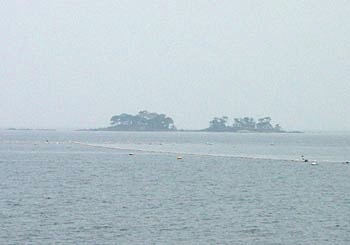

































For suggestions on how to continue your journey, see Alternatives.
I find rice paddies along the seacoast confusing enough (where are they getting the tremendous quantities of water needed for rice cultivation?). But this offshore island seems a total contradiction. What kind of trees are these, that can grow to such heights on a tiny rock in the middle of the ocean? As usual, there was NO one around to ask and solve the mystery.
Journey's end: the tiny town of Himi, and the nearest train station on the eastern end of the Noto Peninsula. It turned out to be quite a pleasant place, with lots of green and a nice canal area - the perfect place to stroll around for an hour or so before the train home.